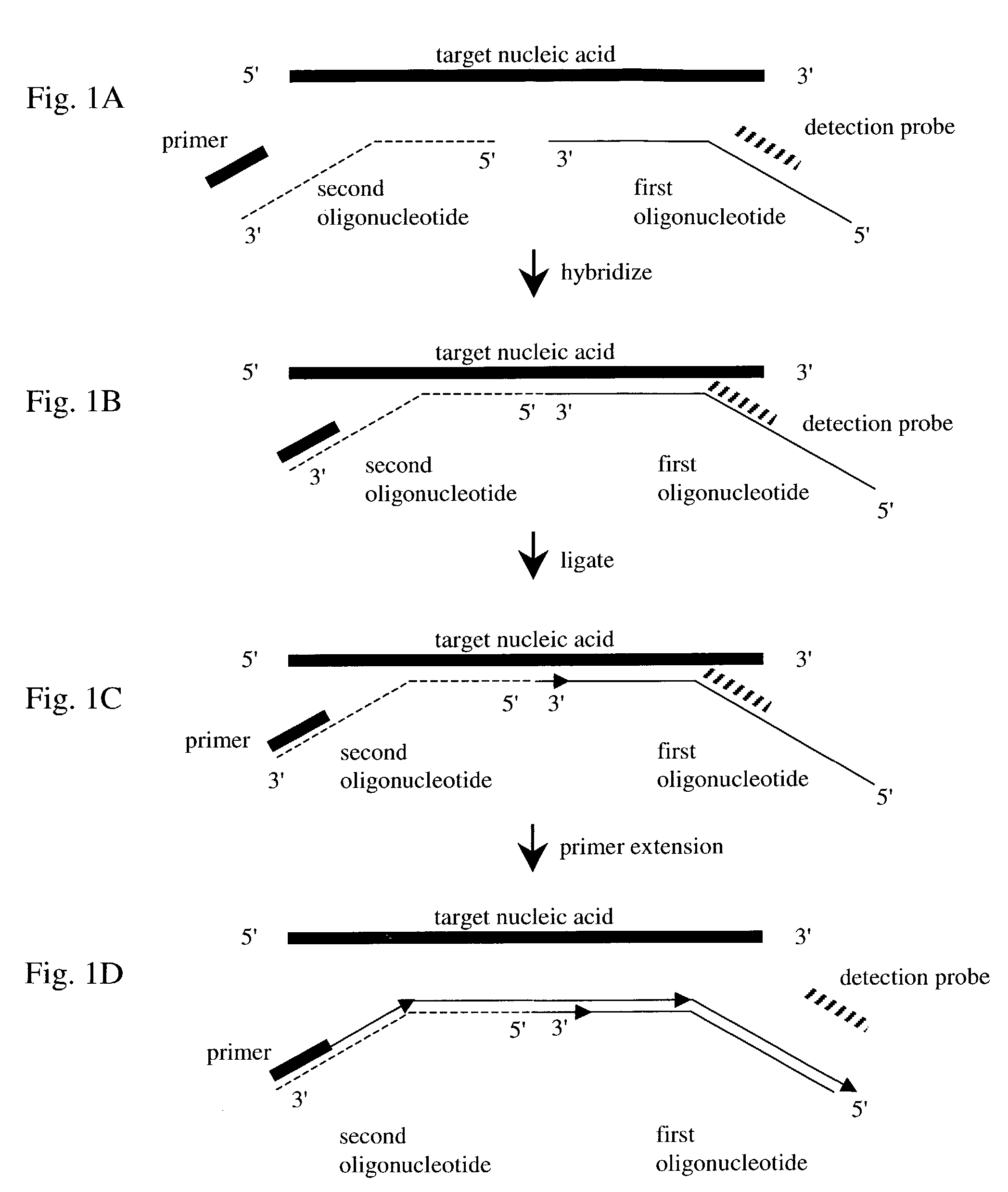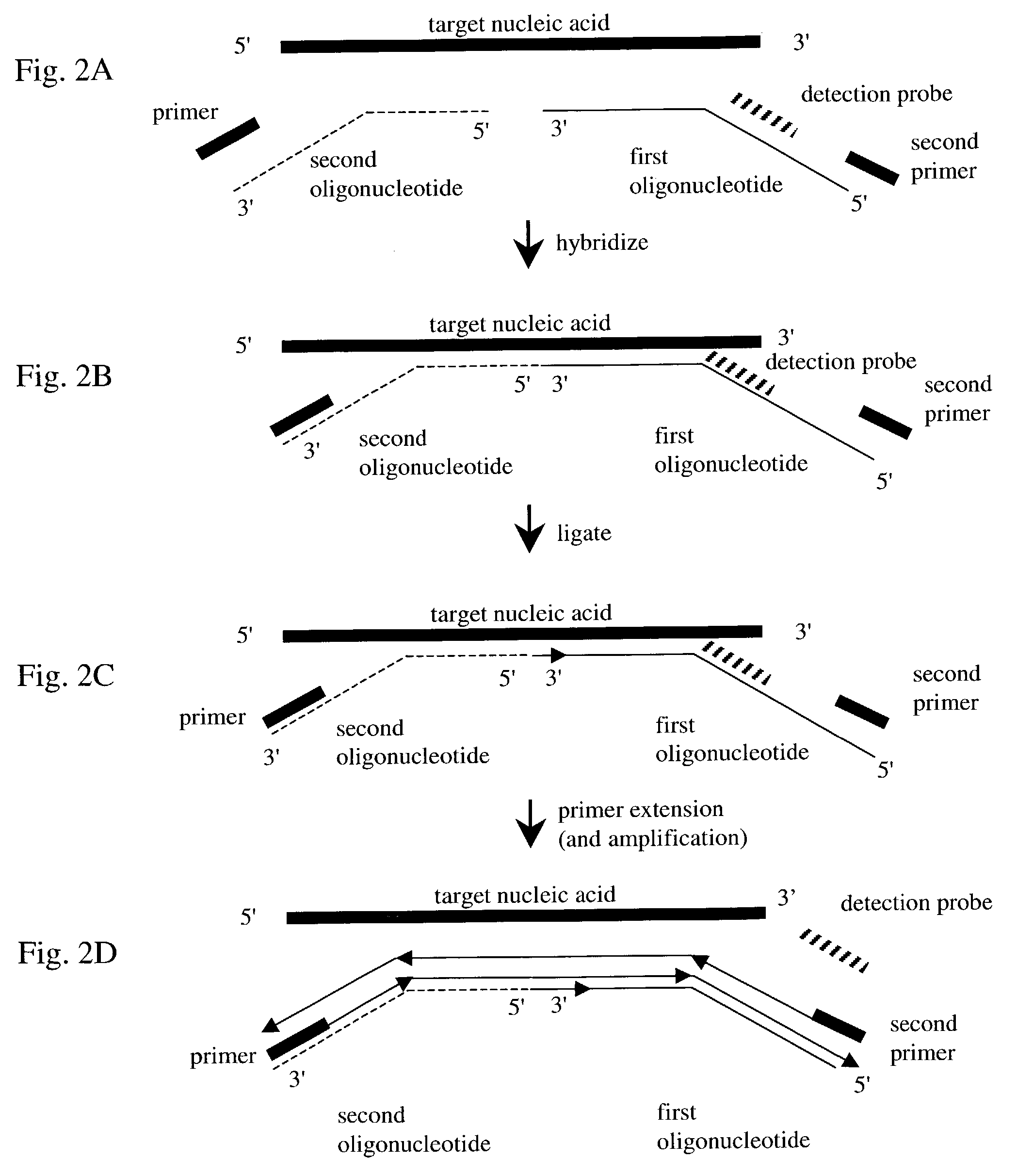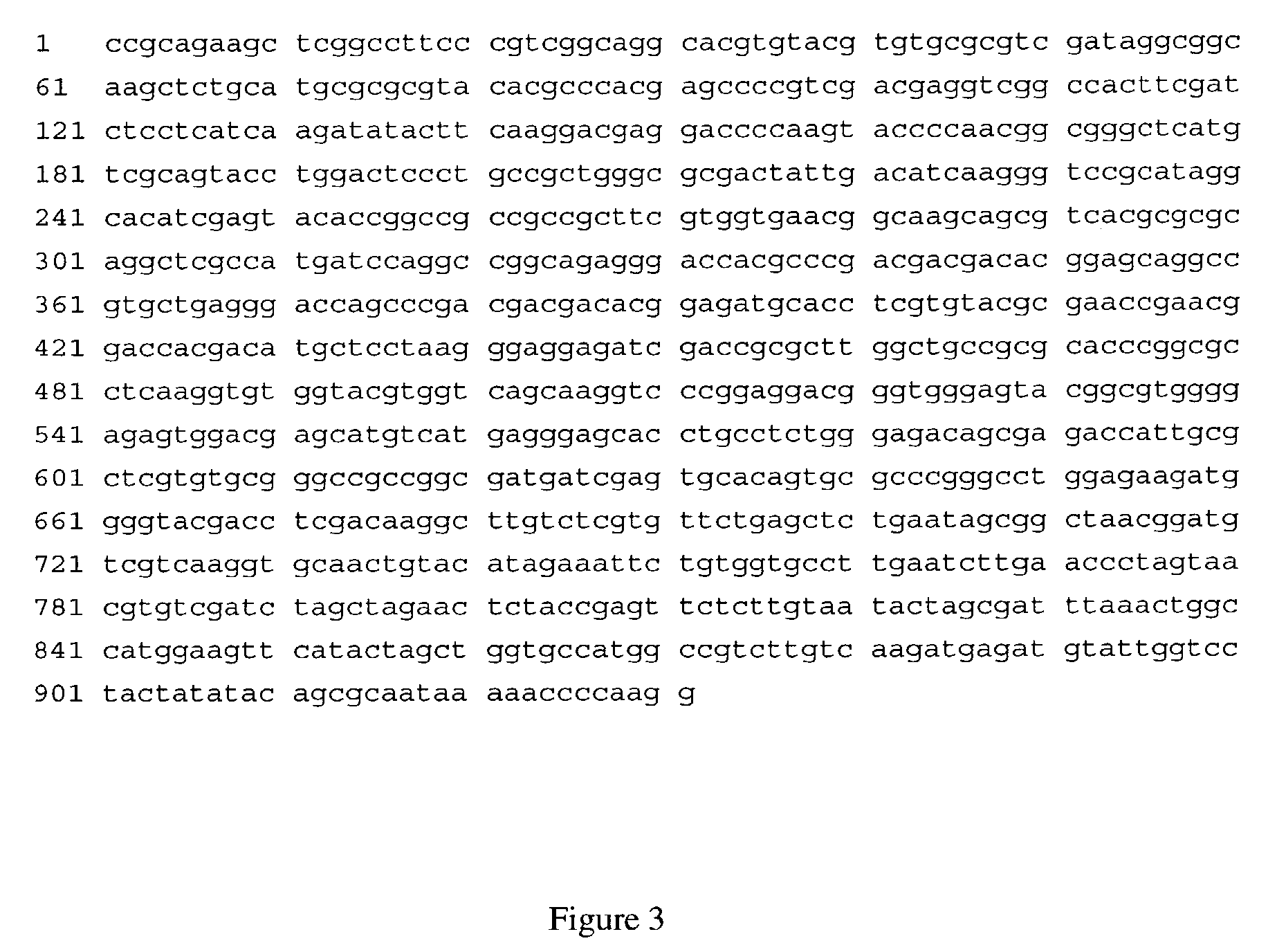Nucleic acid detection method
a nucleic acid and detection method technology, applied in the field of molecular biology, can solve the problems of high cost and easy mistake of all above methods, and achieve the effect of rapid, reliable and cost-effectiv
- Summary
- Abstract
- Description
- Claims
- Application Information
AI Technical Summary
Benefits of technology
Problems solved by technology
Method used
Image
Examples
example i
Detection of a Maize mRNA Encoding for NAD(P)H:Nitrate Reductase
[0071]To detect expression of an mRNA encoding for maize NAD(P)H:Nitrate reductase, total RNA from maize is isolated according to standard methods (see, e.g., Ausubel et al., supra).
[0072]First, a universal sequence is selected. In some embodiments, the universal sequence does not hybridize to a naturally-occurring maize RNA. The universal sequence used in this Example has the following nucleotide sequence:[0073]5′ CCCCCCCCCC CCCCCCCCCC 3′ (SEQ ID NO:1)
[0074]Using SEQ ID NO:1, a detection probe is designed wherein the 5′ end of the universal sequence is covalently linked to a TAMRA quenching moiety and the synthetic dye covalently linked to the 3′ end of the universal sequence is the 6-FAM dye (see, e.g., Molecular Probes, Handbook of Fluorescent Probes and Research Products, Eighth Ed., 2001). The detection probe is labeled with the TAMRA and the 6-FAM moieties following known methods (see, e.g., Molecular Probes, supr...
example ii
Detection of Maize mRNAs Encoding for NAD(P)H:Nitrate Reductase and S-adenosylmethionine Decarboxylase in Maize Total RNA
[0086]To simultaneously detect the presence of an mRNA encoding for NAD(P)H:Nitrate reductase and an mRNA encoding for S-adenosylmethionine decarboxylase in maize total RNA, total RNA from maize is isolated as described in Example I. In addition, the following molecules are synthesized:
1. A second detection probe (for S-adenosylmethionine decarboxylase mRNA) having a second universal sequence. The second universal sequence has the sequence:
[0087]5′ GGAGGAGGAG GAGGAGGAGA 3′ (SEQ ID NO:9).
[0088]Using SEQ ID NO:9, a second detection probe is designed wherein the 5′ end of the second universal sequence is covalently linked to a TAMRA quenching moiety and the synthetic dye covalently linked to the 3′ end of the universal sequence is the Tet dye, which emits light at a different wavelength than the FAM dye used on the first detection probe.
[0089]Next, oligonucleotides a...
PUM
| Property | Measurement | Unit |
|---|---|---|
| length | aaaaa | aaaaa |
| displacement | aaaaa | aaaaa |
| concentrations | aaaaa | aaaaa |
Abstract
Description
Claims
Application Information
 Login to View More
Login to View More - R&D
- Intellectual Property
- Life Sciences
- Materials
- Tech Scout
- Unparalleled Data Quality
- Higher Quality Content
- 60% Fewer Hallucinations
Browse by: Latest US Patents, China's latest patents, Technical Efficacy Thesaurus, Application Domain, Technology Topic, Popular Technical Reports.
© 2025 PatSnap. All rights reserved.Legal|Privacy policy|Modern Slavery Act Transparency Statement|Sitemap|About US| Contact US: help@patsnap.com



